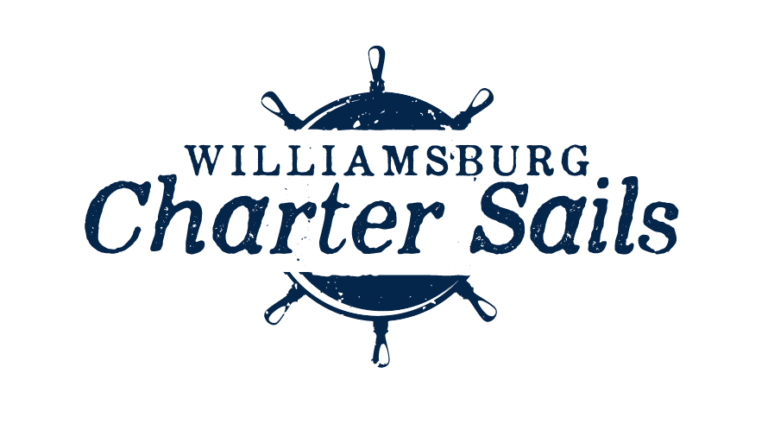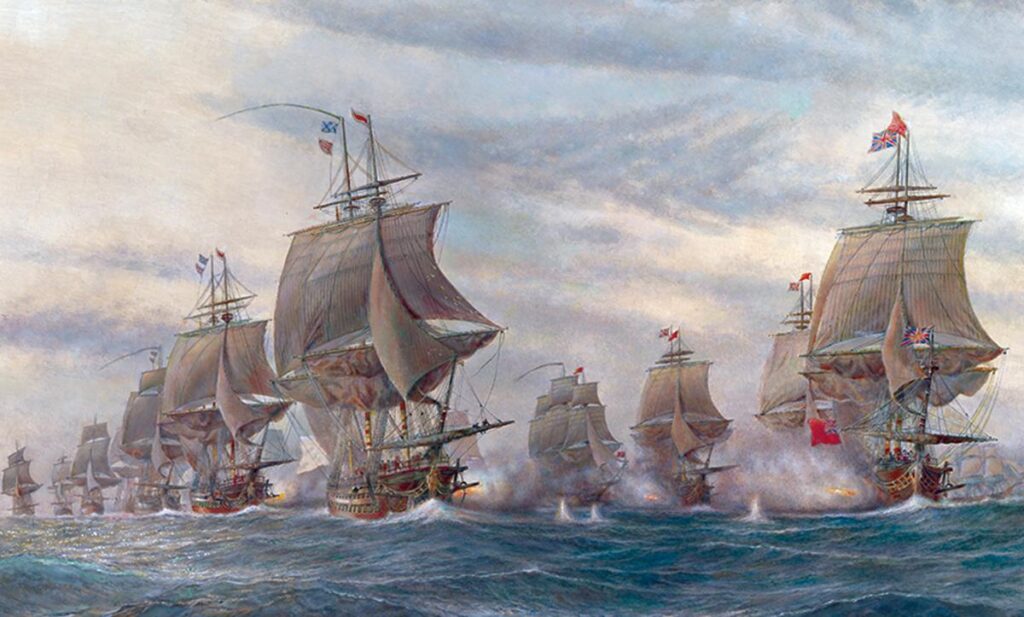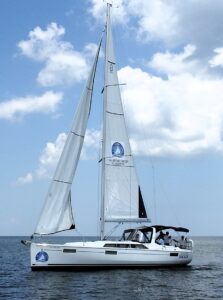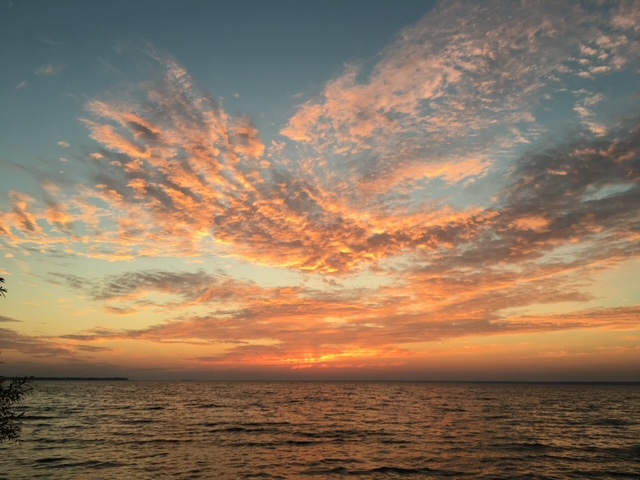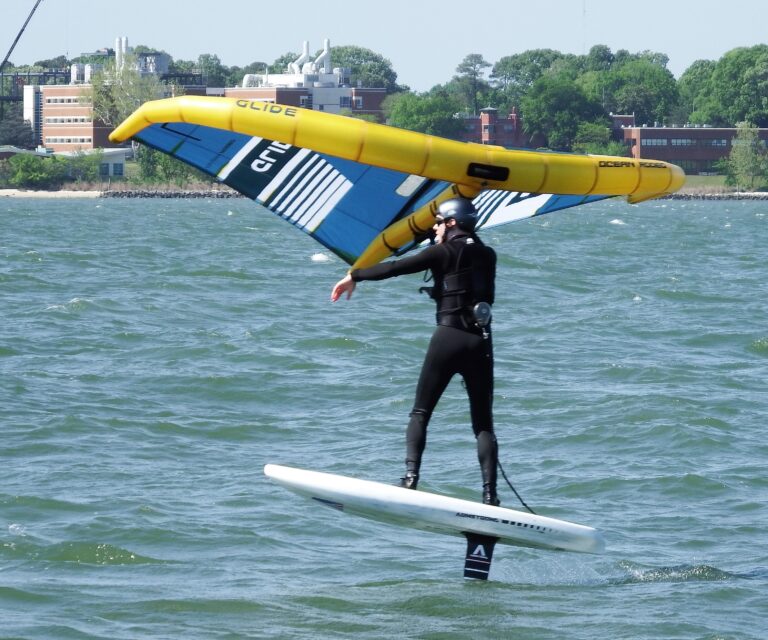According to Chat GPT, illegal or abandoned crab pots—known as “ghost pots”—are a growing concern in the York River, with thousands being removed due to their environmental impact.
The ones pictured here are not abandoned, just illegal. They form the end of a long string of pots recently dropped along the rum line running east from R-2. These four are inside Sarah Creek Channel and therefore a menace to mariners. I sent the photo to the Virginia Marine Resources Commission for their enforcement through the Virginia Marine Police.
The Virginia Institute of Marine Science (VIMS) has been actively working to remove derelict or ghost crab pots from the York River and the broader Chesapeake Bay. These pots are often lost due to storms, boat traffic, or improper placement, and they continue to trap marine life long after being abandoned.
In February 2025, VIMS reported removing thousands of these ghost pots, which pose serious threats to navigation, local ecosystems, and species like turtles and muskrats.
In the past few days, we have seen two ghost pots that are likely newer than older and simply drifting away from their original position. Regardless, snagging the line on the prop or the keel or the rudder is a genuine hazard to be avoided.
⚠️ Why Ghost Pots Are a Problem
1. Unintended trapping: Abandoned pots continue to catch crabs and other animals, leading to unnecessary deaths and ecological disruption.
2. Navigation hazards: Floating lines and submerged cages can damage boats or become entangled in propellers.
3. Habitat damage: Pots can crush sensitive bottom habitats and disrupt natural sediment flow.
🦀 Legal Crabbing Rules in Virginia
To prevent illegal crabbing practices:
4. Recreational crabbers may use up to two commercial-style crab pots without a license, but only for personal use and within daily limits (one bushel of hard crabs and two dozen peeler crabs).
5. Commercial crabbers must follow strict seasonal limits. For 2025, the lawful season for hard crab pots is March 17 through November 30.
6. Licensing is required for additional gear or larger operations, and violations can result in fines or confiscation of equipment.
🛠️ Enforcement and Cleanup
7. VIMS collaborates with local watermen and environmental groups to locate and remove ghost pots.
8. Public awareness campaigns aim to educate crabbers on proper gear use and retrieval.
9. Technology like sonar mapping and GPS tracking is being used to identify derelict gear hotspots.
Pirate Ship
Meanwhile, here is a photo of an unidentified ketch or schooner anchored off Sarah Creek, away from the rogue pots. It looks like a pirate ship and didn’t seem to have anyone on board.
History Revised
As the sailing season nears an end, I’ve begun to revise the paintings of the Battle of the Capes. The painting above shows the famous original used in the History Talk to couples and families. The next two show the guns more vividly. Note as well as the rocking waves, which affect the angle of the cannon fire.
Cancer Sails
I recently agreed to be a captain as well as first mate for Sail Beyond Cancer, on a 41-foot Beneteau. Since launching their mission sails on June 22, 2025, they have:
-
Completed 43 cancer respite sails on the beautiful York River
-
Scheduled 20 more sails to bring cancer patients sailing
-
Provided 249 individuals the chance to leave CANCER ASHORE for three precious hours of healing and connection
This is 100% local impact. The mission reaches families across Virginia and beyond, and each 3-hour mission sail costs about $500 to provide. None of this would be possible without the generosity of individuals, foundations, and companies who share their belief in honoring those challenged by cancer.
Women enjoy sailing today more than ever, and particularly a romantic cruise. Couples get to enjoy a romantic getaway as they sit up on the bow for privacy, and Let’s Go Sail provides professional photos for free. First-time or skilled mariners are welcome to sail a modern-32-foot sailboat in a unique setting of wildlife and Fall foliage or Spring bloom. It makes for an extraordinary anniversary idea.
Wisconsin Sailors
Jenny Cogdill took her mom and brother sailing while visiting Williamsburg from Wisconsin. They said it gets down to 60 below once or twice a winter. I asked what you do about that.
 “Stay inside!” insisted her brother Ryan. They also talked about the annual rite of Spring when people bet on precisely when an old car will fall through the ice. “It’s in Burlington,” Jodie said. “They must use the same car every year.”
“Stay inside!” insisted her brother Ryan. They also talked about the annual rite of Spring when people bet on precisely when an old car will fall through the ice. “It’s in Burlington,” Jodie said. “They must use the same car every year.”
I looked it up and found nothing in Wisconsin. Chat GPT reported instead:
The concept of betting on when a car will fall through the ice is more famously associated with places like:
-
Lake Champlain, Vermont: Known for the “Jeep on the Ice” fundraiser.
-
Alaska and Minnesota towns: Where similar bets raise money for local causes.
Sunken Fleet
People are astounded to learn that 100 ships from the battles of 1781 lay beneath the York River. Nearly all of them have long since disappeared due to weather, current and rot. 77 have been identified by name, and 23 other smaller vessels are included but not mentioned by name.
 Michael Steen has been looking underwater for 50 years, most recently as director of education for the Watermen’s Museum overlooking the York. He spoke to the Capitol Club of Williamsburg on what’s new and what’s old out there.
Michael Steen has been looking underwater for 50 years, most recently as director of education for the Watermen’s Museum overlooking the York. He spoke to the Capitol Club of Williamsburg on what’s new and what’s old out there.
Steen said that when he sailed into Virginia via the Chesapeake Bay, he looked to settle at Gosport near Portsmouth but rejected it because it had 5,000 ex-slaves who were largely suffering from malaria. He settled on Yorktown as “the deepest natural port on the entire east coast.” At 80 feet deep, it could handle any size of warship — and still can.
The surrender of Oct. 19 included 100 ships of various sizes. “We know the names of 77 of them,” and he provided a brochure with the names. “They included famous ships such as the Fowey, Guadeloupe and Charon.” Some of them were from the nascent Virginia state navy, while others were barges and small enough to be unnamed.
 The British won the smaller first Battle of the Capes in March 1781 before the big one in September, where the French prevailed. When the French deployed four man-of-war battleships at the end of the York River, Steen said Cornwallis partially sunk 24 of his transport ships to form a line of defense. This differs from the 10 ships usually cited. “They were only in 15 feet of water, at the very edge of the river but with their spars and masts upright in defense.”
The British won the smaller first Battle of the Capes in March 1781 before the big one in September, where the French prevailed. When the French deployed four man-of-war battleships at the end of the York River, Steen said Cornwallis partially sunk 24 of his transport ships to form a line of defense. This differs from the 10 ships usually cited. “They were only in 15 feet of water, at the very edge of the river but with their spars and masts upright in defense.”
When the Charon was bombarded by hot shot from the French, it drifted across the river and sank beyond the point. That’s contrary to the belief Cornwallis took it intentionally out of harm’s way to avoid the allied bombs.
On land during the Siege of Yorktown, the allies dug their first parallel of gun emplacement 500-600 yards from the British works, Steen said. “The second line was within 300 yards. By the time we broke through Redoubts 9 and 10, we could shoot point-blank.”
 At the surrender, the French took control of the myriad ships and salvaged four of the larger ones for re-use in war. “They managed to refloat the Guadeloupe as well.”
At the surrender, the French took control of the myriad ships and salvaged four of the larger ones for re-use in war. “They managed to refloat the Guadeloupe as well.”
Perhaps the first big find was the Betsy, in 1970, just offshore from the Yorktown Beach. “It was a British frigate, and we recorded 5,000 artifacts.” A cofferdam to let people look into the water at the Betsy soon silted up and became obsolete. “They found dried corn along with a rat skeleton and cat skeleton watching the rat.”
Decades later at the archaeology of the Charon across the river, “They found a piece of charcoal from the burning, and it still smelled of smoke.” The ship had up to seven cannons onboard, and evidently they are still down there. International treaties still in force require us to notify the French and the British of any finds before pulling them up. “And then we have to keep some of the artifacts emersed in a tub of York River water to avoid desalinating too soon, It can take five years, and costs lots of money.”
 Steen said that last year his staff and the Virginia Marine Police had their eye on a mysterious deadrise that moved around the river coast, apparently looking around below. “They said they were fishing for clams, but there are no clams in the York River. When we boarded the boat, they showed us a bucket of clams. They did not show us boxes of artifacts they may have dug up.”
Steen said that last year his staff and the Virginia Marine Police had their eye on a mysterious deadrise that moved around the river coast, apparently looking around below. “They said they were fishing for clams, but there are no clams in the York River. When we boarded the boat, they showed us a bucket of clams. They did not show us boxes of artifacts they may have dug up.”
A new exhibit of artifacts is coming in 2026, and a bigger exhibit is due in 2031 for the 250th anniversary of the surrender, Steen said.
